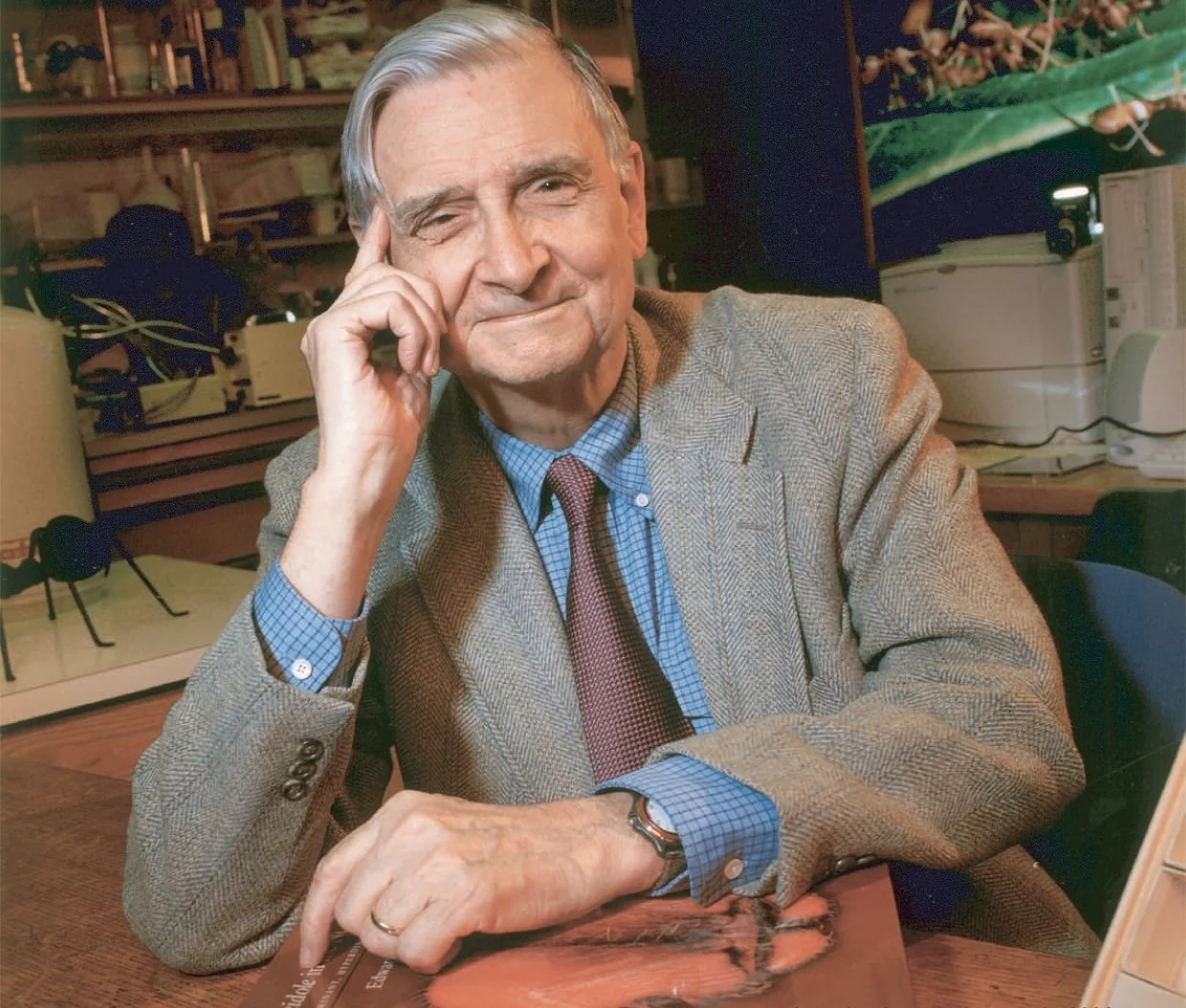In Memory of Edward O. Wilson, A Biophilic Pioneer
Advertisement
E. O. Wilson in 2003. Photo: Wikipedia
The global community of green infrastructure professionals, designers and academics lost a great mind with the passing of Edward O. Wilson on December 26th, 2021. Wilson’s departure came at the age of 92, four months after the loss of his wife, Irene. Long before many in the field of green infrastructure were born, E.O. Wilson in 1955 received his PhD from Harvard University for his thesis on the ant genus Lasius. Over his career spanning seven decades, Wilson made a wide variety of contributions to scientific development, especially within sociobiology and evolutionary biology.
While Erich Fromm had already used the term biophilia in his 1964 book, The Heart of Man, it was E.O. Wilson’s framing of the term biophilia within evolutionary theory (Biophilia, 1984) which, with time, has so significantly influenced design and empowered the green infrastructure community.
The Biophilia Hypothesis, by Edward O.Wilson. Photo: Wikipedia
Wilson wrote at length about the grossly limited sensory abilities of our species compared to others. Still, as adaptable and insulated as we are within our narrow sensory band, we are dependent on surroundings akin to the natural habitat and stimuli we evolved in in order to be healthy and whole.
The Living Architecture Monitor’s Biophilic Design Issue Fall, 2017 marks the green infrastructure community’s full recognition of biophilic quality as a central performance criterion for green infrastructure projects and gives due credit to E.O. Wilson’s contribution to our field.
After writing Biophilia, Wilson collaborated with professor Stephen R. Kellert, another icon in biophilic design and the green infrastructure community, editing The Biophilia Hypothesis in 1993. In his opening chapter, Wilson points out both the evidentiary basis supporting the biophilia hypothesis as well as the “pure evolutionary logic” of it. “The brain evolved in a biocentric world, not a machine-regulated world.” Wilson’s chapter also alludes to his personal and then growing concern over the loss of biodiversity, claiming that the quality of our survival as a species is dependent on the conservation of biodiversity.
In his 1994 autobiography, Naturalist, Wilson describes his childhood as blessed, insulated from the problems of the Old South in the USA and with ample access to his “magic kingdom” of nature. Juxtaposing Wilson’s origins of challenging family issues and lack of class privilege against his scientific achievements, one can only agree with Wilson’s own self-assessment as his being an optimist. This is a man who lifted himself up by his own bootstraps, and is truly worth reading about, regardless of one’s personal interest in biophilia, sociobiology or green infrastructure.
Advertisement
Biophilia by Edward O.Wilson. Photo: Wikipedia
Later in life Wilson devoted himself to biodiversity conservation and founded The E.O. Wilson Biodiversity Foundation to foster a knowing stewardship of our world through biodiversity research and education initiatives. Wilson’s 2016 book Half-Earth, proposed setting aside half of the planet for wildlife and nature conservation. The proposal has been criticized as unrealistic and radical, but so is continuing business as usual which will result in mass extinction and existentially threaten biodiversity loss.
How can green infrastructure practitioners honor Edward O. Wilson’s legacy? A good start would be embracing the goals and principles of the UN Decade on Ecosystem Restoration and ensuring that green infrastructure value chains avoid ecosystem destruction and that projects support biodiversity.
As a humanist, the naturalist Wilson wrote, “I hereby cast a vote for existential conservatism, the preservation of biological human nature as a sacred trust. We are doing very well in science and technology. Let’s agree to keep it up, and move both along even faster. But let’s also promote the humanities, that which makes us human, and not use science to mess around with the wellspring of this, the absolute and unique potential of the human future.” At the dawn of the emergence of Artificial Intelligence, we would do well to continue reflecting on Edward O. Wilson’s legacy of wisdom and sensibility.
David Vernon Brasfield is an architect, Chair of the Norwegian Green Infrastructure Association and the Secretary of the World Green Infrastructure Network.







